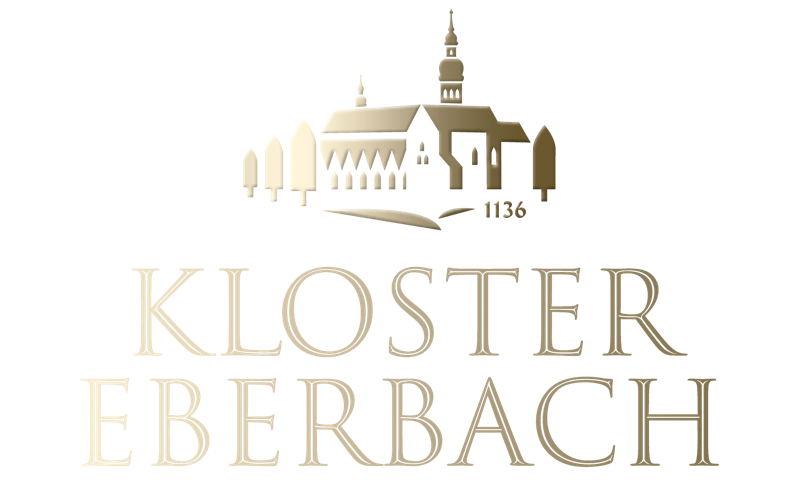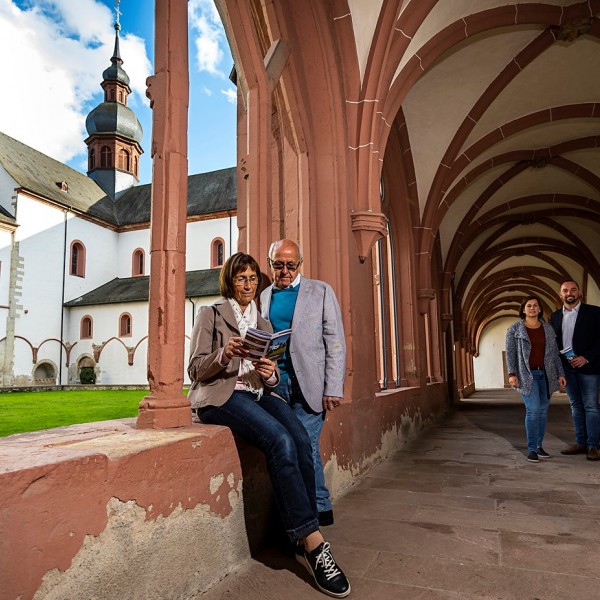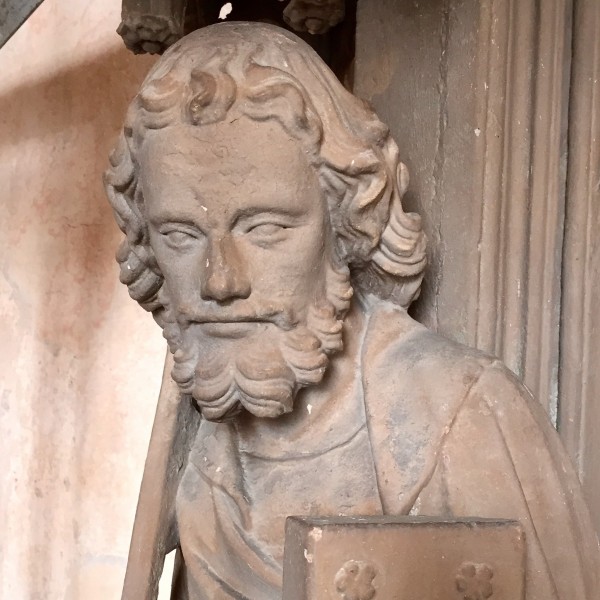The Abbey's Beginnings
**around 1116
Foundation of an Augustinian canons' monastery in the Kisselbach valley by Archbishop Adalbert of Mainz.
1131
Dissolution of the canons' monastery and handover to the Benedictines of Johannisberg
1136
Foundation of the Cistercian monastery of Eberbach in the filiation of Clairvaux as one of the most successful Cistercians on the right bank of the Rhine. The convent with Abbot Ruthard and 12 monks moves into the monastery buildings of the pre-Cistercian period.
**around 1145
Impairment of monastic life in Eberbach at the time of the schism under Pope Alexander III and the Hohenstaufen counter-popes. Interruption of the building work
**around 1170
Resumption of construction work with a new spatial arrangement of the abbey church based on the building principles of the Rhenish Romanesque style.
1186
Consecration of the monastery church by Archbishop Konrad of Mainz with the assistance of the bishops of Worms, Strasbourg and Münster.
Ascent and Social Tensions
until 1220
Completion of the convent building and hospital building. Completion of the Romanesque building period
**around 1240 to around 1270
New construction of the Gothic east wing of the enclosure, incorporating parts of the Romanesque predecessor building (completion around 1345).
1261
Assassination of Abbot Werner by a lay brother (Converse): climax of the social tensions between monks and Converse that had existed since about 1200.
1313
Foundation of the first burial chapel in front of the southern aisle; eight more chapels added by the middle of the century
1332
Donation of relics of St. Bernard from Clairvaux to Eberbach
Wine Cellar in the Abbey
1401
Conferment of the so-called pontificals (episcopal insignia of office) by Pope Boniface IX on Abbot Nicholas II and his successors.
**around 1478 until around 1480
The west wing of the cloister is covered with a half-timbered storey to accommodate the library and archive rooms.
**end of the 15th century
Conversion of monastic rooms (fraternei, lay refectory) into wine cellars
German Peasants' War
**around 1500
Late Gothic reconstruction: Installation of two cell corridors in the monks' dormitory and replacement of the windows there with rectangular windows: tendril paintings in the monastery church and in the enclosure area. Glazing of the cloister.
1525
Looting of the abbey by the rebellious peasants; emptying of the so-called "Great Barrel" (71,000 litres; first filling in 1500)
30 Years' War
1631
Occupation and looting of the monastery by Swedish and Hessian troops during the 30 Years' War; theft of the medieval monastery library; flight of the convent to Cologne. Loss of the 384,000 litres of wine accumulated to finance a new monastery building.
**17th century
Only hesitant recovery from the damage of the 30 Years' War.
1679
Partial destruction of the lead roofing of the church by a storm
Brisk Construction
**18th century: economic boom, combined with brisk building activity from 1704 onwards.
1704-1715
Baroque remodelling of the interior of the monastery church
1707-1738
The convent building, which had already been used for economic administration since the 15th century, was extended and baroqueised in two sections.
1718-1721
Demolition of the Romanesque monks' refectory and construction of a new Baroque building; furnished with a stucco ceiling by Daniel Schenk from Mainz in 1738.
1746
Renewal of the roof truss of the church, abandoning the Romanesque roof pitch; construction of the present crossing ridge turret
1755
Construction of the orangery in the Abbey Garden
1774
Construction of the Baroque entrance portal with sculptural decoration by Nikolaus Binterim
Secularisation
1803
Kloster Eberbach is assigned to the House of Nassau-Usingen as compensation for the loss of territories on the left bank of the Rhine as a result of the Principal Decree of the Imperial Deputation. Formal dissolution of the monastery on 18 September. Further use of parts of the monastery buildings as a state-run vineyard.
1803-1815
Partial demolition of the cloister. Disposal and destruction of the monastery inventory.
1813-1912
Use of parts of the monastery as a penal institution ("Correction House") and since 1877 as a penal prison.
1815-1849
Use of further buildings as a "lunatic asylum"; predecessor of the nearby Eichberg Clinic, which was occupied in 1849
1866
Prussian administration of the monastery complex after the annexation of the Duchy of Nassau by the Kingdom of Prussia
20th Century up to Today
1913-1918
Use of parts of the facility as a military convalescent home
1929-1939
Renovation of the monks' dormitory and the monastery church, restoring the original interior design.
There is a research project on the history of the monastery during the Third Reich.
1946
Transfer of the monastery complex into the possession of the State of Hesse under the administration of the Hessian State Wine Estates.
1985
Filming location for the interior shots of the film "The Name of the Rose" based on the novel by Umberto Eco.
1986
Start of a general renovation of all buildings in the monastery to preserve the historical fabric; development of contemporary utilisation.
1998
Transfer of the complex into the ownership of a non-profit foundation under public law called Kloster Eberbach Foundation. Tasks: Opening of the monastery to the general public and permanent preservation of the grounds through their moderate use and sustainable management.
2002
Formulation of a guiding principle for the use of the monastery and adoption by the foundation's committees.
2003
850th anniversary of the death of the monastery founder Bernard of Clairvaux; exhibition "Bernard of Clairvaux: The Cistercian Saint to and in Art".
2004
Installation of the Romanesque cross from the west gable of the monastery church in the choir of the basilica August to November: Exhibition of medieval manuscripts from the Cistercian environment of Eberbach in the Abbey Museum - May 2004
**March 2010
Inclusion of the Kloster Eberbach Foundation in the Charte europeénne des Abbeyes et Sites Cisterciens
2011
875th anniversary of the founding convent (13/02/1136) and 825th consecration day of the monastery church (23/05/1186)




